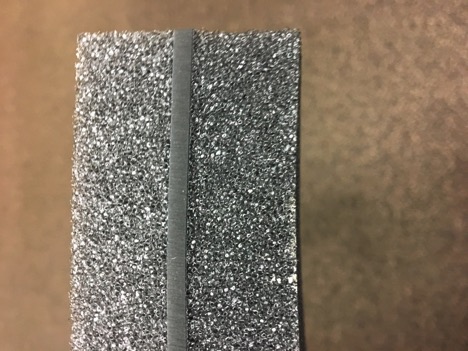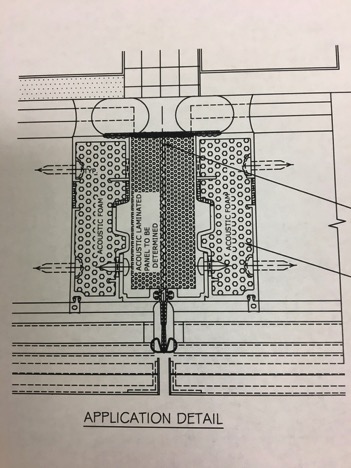
The phone rings and a long time building façade customer says that an architect is designing an upscale apartment building and requests a 55dB drop in sound attenuation across wall partitions. The customer indicated that there was room in the mullions where the panels are joined to friction fit the acoustic baffle panel but it had to be supplied in a 1.625” thickness, 3.9375” wide and in 105” and 125” lengths.
Approaching the Problem
Without diving too deeply into acoustic theory, reducing sound depends on where the sound originates. If the sound is generated within a room, then it needs to be absorbed. If it is generated outside, keeping out the sound requires a space to be insulated. If it is transmitted through the structure, then it needs to be isolated from the source of the vibration.
Cellular and porous materials can be useful materials for absorption and isolation although they are not great at insulating. The carpets and draperies we have in our homes are the most common porous absorbers. Open cell foams are good choices for sound absorption as they permit air to flow into the cellular structure where the sound energy is turned into heat.
Damping refers to the capability of a material to dissipate energy; particularly vibrational energy. Elastomeric materials are excellent at damping vibration which is why we find them on everyday items such as the bottom of our computers, appliances, and furniture. The mechanism for vibrational energy is the same as for cellular materials, they turn vibrational energy into heat.

The Solution
Tom Brown, Inc. selected a ¾” open cell polyurethane foam that could be adhered to both sides of a 1/8”, 70 durometer , EPDM rubber. The open cell urethane foam provided the sound absorption capability along with some insulating properties and the EPDM layer contributed damping to any vibrational energy.
A rubber based, double coated film tape was selected to bond the urethane to the EPDM layer through a 60” wide multiple step lamination process. The laminate was then taken to a Water Jet cutting table for processing into the final dimensions required by the customer.
Combining the right materials, in the right size, at the right time is what Tom Brown, Inc. does. Want to know more about how we can help you? Give us a call or visit us at www.tbi.com
